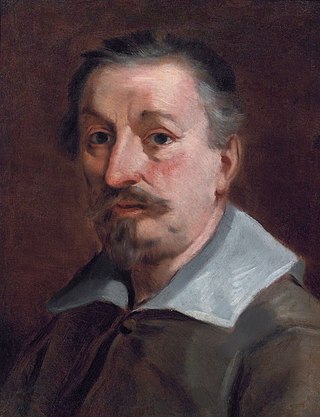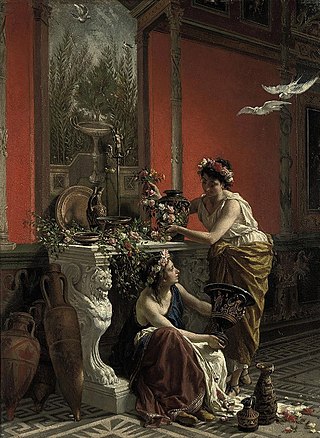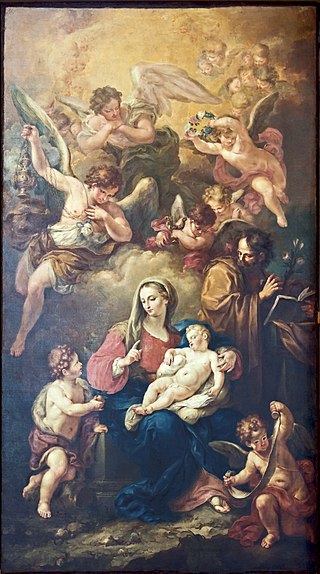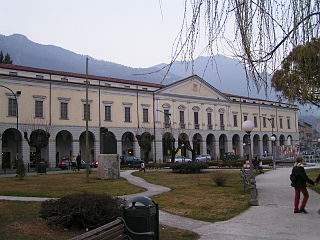

Giovanni De Min (Belluno, October 24, 1786- Tarzo, November 23, 1859) was an Italian painter and engraver, active in a Neoclassic style.


Giovanni De Min (Belluno, October 24, 1786- Tarzo, November 23, 1859) was an Italian painter and engraver, active in a Neoclassic style.
His parents were of humble origins; his mother, Lucia Schiochet, was the domestic servant of Francesco Maria Colle, a professor of the Atheneum of Padua. In Padua, Demin first apprenticed with Paolo De Filippi, who noting his skills, and with the patronage of the Falier family of San Vitale, had him enrolled by 1804 at the Academy of Fine Arts of Venice, directed by Lattanzio Querena. There he studied alongside Francesco Hayez, and was a pupil of the painter Teodoro Matteini and Pietro Tantini. In 1808, De Min was awarded a stipend from the Academy to study in Rome. There he fell under the influence of neoclassical artists such as Canova.
Returning to Venice, De Min mainly dedicated himself to fresco or panel decoration of houses and salons. His decorations (1817) of mythologic themes in the Palazzo Cicognara in Venice, using designs by Hayez, are now lost. The next year, in collaboration with Hayez he helped decorate the Palazzo of the Count Giovanni Papadopoli in San Marina with depictions of Leda, Diana and Acteon, Salmace and Hermaphrodite, Callisto, Venus and the Graces. He also painted The Four Elements and The Dream of Love for the casa Comello near San Canciano in Venice. Also in 1818 in collaboration with Hayez, and in a commission arranged by the secretary of the Accademia, Antonio Diedo, he participated in the restoration of the Tintoretto canvases in the Ducal Palace. With the death of Angelo Pizzi by 1819, and with the encouragement of Count Cicognara, De Min had been named to professor of sculpture at the Accademia.
It is not clear how active he was as a professor, since by 1818, De Min had moved over to Padua, where he was very active. He worked on the decoration with subjects from the Iliad (1818) of the Palazzo Pesaro-Papafava. He painted a Triumph of Rossini (1822) in the Palazzo Treves de' Bonfili. In collaboration with Hayez, they painted a series of mythologic subjects: Convito degli Dei, Triumph and Marriage of Bacchus and Ariadne, Mars and Venus, and Venus and Ascanius (1821–24) in the Palazzo Rusconi Sacerdoti. In 1824-25, he painted the Story of Psyche, and episodes from Tasso's work in the Palazzo Gaudio. In 1825, in the Palazzo Rossi, now Moschini, he painted mythologic subjects. In 1828, in Palazzo Revedin, he painted La Fortuna, Laocoon, Ulysses kills Procedus. In this same decade he painted the Education of Achilles and Apotheosis of Canova in Palazzo Crescini-Trieste. [1] For the casa Fasolo, he painted Erminia saves Tancred, Jove and Juno, Leda. Finally from 1829-1831, he frescoed the Story of Psyche for the Palazzo Treves de' Bonfili in Venice, a palace where Ludovico Lipparini, Borsato, Cicognara and others were employed. He also painted a large historic canvas of the Massacre of Alberico da Romano and his family, which only is now known through an 1839 lithography by Francesco Locatello.
Demin late in life moved to Ceneda, near present-day Vittorio Veneto, and painted frescoes in churches and Villas in Veneto including La Lotta delle Spartane in Villa dei Patt near Belluno. [2] He also painted the Council Hall of the Palazzo Rosso in Belluno and in 1837 a salon of Villa Gera in Conegliano. [3]
He painted large oil canvases depicting the Resurrection of Lazzarus (1825), The Exile of the Ezzelini and the Profanation of the Temple for the church in Auronzo. In 1830, he painted the Apostles in fresco for the church of Possagno, a Final Judgement for a church in Paderno, Queen Saba before Solomon and the St Saba embarks for Constantinople (1846). He painted the Defeat of the Fallen Angels for the church of Caneva. [4]
He engraved a series of scenes in Honor of the Empress Caroline Augusta of Bavaria (1818). [5]
One of his pupils was Pietro Paolétti.

Giovanni Battista Tiepolo, also known as GiambattistaTiepolo, was an Italian painter and printmaker from the Republic of Venice who painted in the Rococo style, considered an important member of the 18th-century Venetian school. He was prolific, and worked not only in Italy, but also in Germany and Spain.

Francesco Albani or Albano was an Italian Baroque painter who was active in Bologna (1591–1600), Rome (1600–1609), Bologna (1609), Viterbo (1609–1610), Bologna (1610), Rome (1610–1617), Bologna (1618–1660), Mantova (1621–1622), Roma (1623–1625) and Florence (1633).

Ca' Rezzonico is a palazzo and art museum on the Grand Canal in the Dorsoduro sestiere of Venice, Italy. It is a particularly notable example of the 18th century Venetian baroque and rococo architecture and interior decoration, and displays paintings by the leading Venetian painters of the period, including Francesco Guardi and Giambattista Tiepolo. It is a public museum dedicated to 18th-century Venice and one of the 11 venues managed by the Fondazione Musei Civici di Venezia.

Marcantonio Franceschini was an Italian painter of the Baroque period, active mostly in his native Bologna. He was the father and teacher of Giacomo Franceschini.

Sebastiano Ricci was an Italian painter of the late Baroque school of Venice. About the same age as Piazzetta, and an elder contemporary of Tiepolo, he represents a late version of the vigorous and luminous Cortonesque style of grand manner fresco painting.
Giovanni Gioseffo dal Sole was an Italian painter and engraver from Bologna, active in the late-Baroque period. Upon the death of Carlo Cignani, Gioseffo dal Sole became among the most prominent painters in Bologna, described as the Guido Moderno.

Jacopo Zucchi was a Florentine painter of the Mannerist style, active in Florence and Rome.

Giuseppe Angeli was an Italian painter of the late-Baroque, known for depicting both genre and religious subjects.

Cesare Mariani was an Italian painter and architect of the late-19th century, active in Rome and Ascoli Piceno.

The Palazzo Barbarigo Minotto is a 15th-century palace on the Grand Canal in Venice, northern Italy, next to the much larger Palazzo Corner. Built in the Venetian Gothic style, it was originally two palaces, Palazzo Barbarigo and Palazzo Minotto, later joined together. The Barbarigo palace was owned by the Barbarigo family for several centuries and was the birthplace of Gregorio Barbarigo, who once refused the Papal Crown. It was later owned by the Minotto and Martinengo families.

Francesco Podesti was an Italian painter, active in a Romantic style. Together with Francesco Hayez and Giuseppe Bezzuoli, he is considered one of the greatest Italian painters of the first half of the 19th century. He was prolific in his large canvases on historical subjects. He is best known for his fresco work, including those in the Hall of the Immacolata in the Vatican Museum.
Pietro Paoletti was an Italian painter and engraver.
Teodoro Matteini was an Italian painter, mainly of historical and religious subjects in a Neoclassical style.

Cosroe Dusi was an Italian painter in the Neoclassical style, active for many years in St Petersburg, Russia, painting mainly sacred and historical subjects. Dusi was nicknamed by his contemporaries the "modern Tintoretto", for his liveliness of invention and rapidity at painting.

Giovanni Battista Mengardi, or Giambattista Mengardi was an Italian painter and art restorer.

Felice Schiavoni was an Italian painter, depicting history, genre, and portraits. During his early career, he often collaborated with his father, the painter Natale Schiavoni.

Liberale Cozza was an Italian painter, active mainly in his native Venice, but also in Brescia in a Neoclassical style.
Domenico Udine Nani, also known as Domenic Nani da Udine (1784–1850), was an Italian painter, originally from the Region of Trento and active in a Neoclassical style.

The Accademia Tadini is a museum and art gallery, as well as an academy of both visual arts and music in Lovere, Province of Bergamo, Italy. It is located on Via Tadini #40, facing the shores of Lago d'Iseo.
This is an alphabetical index of people, places, things, and concepts related to or originating from the Republic of Venice. Feel free to add more, and create missing pages.